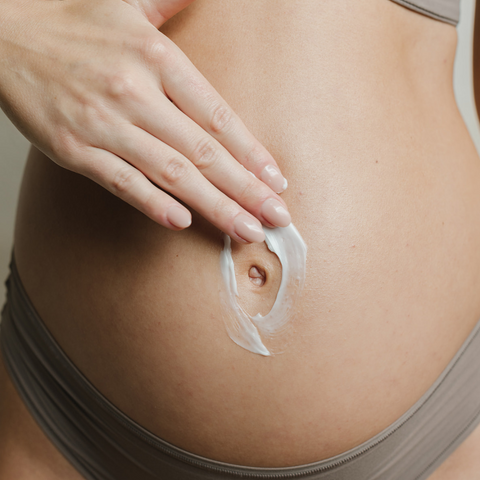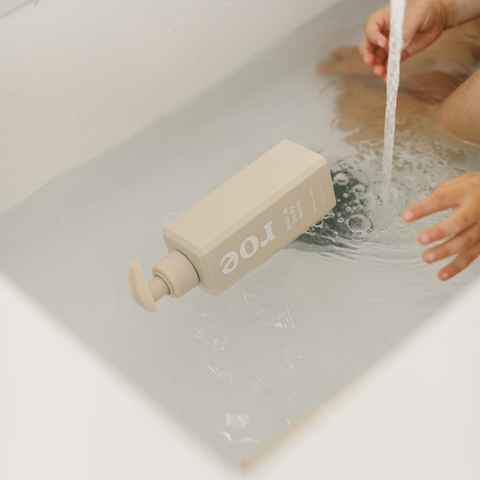When talking about your skin, what happens on the outside counts. To have healthy skin, it's essential to take care of your skin's superficial layer. When your skin barrier is damaged, you invite redness and dryness to the party.¹ It's more common than you may think. You may not even realize that your everyday habits or skincare products harm your skin.²

Here are some ways to explain:
- Your skin is protected by a barrier that controls the amount of moisture lost and prevents outside aggressors from entering.³
- As we age and our genes influence us, our skin barrier weakens; this is also influenced by over-cleansing and UV exposure.⁴
- A dry, dull, red, sensitive, and antioxidant-deficient skin is a sign of a damaged skin barrier.⁵
- If you don't moisturize your skin properly, it can lead to unhealthy skincare habits that damage your skin barrier.
- Your skin barrier can improve by inviting humectants, emollients, ceramides, and antioxidants.⁶
First, let's talk about what the skin barrier is. The skin barrier is called the epidermis, the outermost layer of cells on the skin. It sits above the dermis, blood vessels, sweat glands, nerves, and essential proteins like collagen and elastin.⁷ Located underneath the skin is a layer of fat to cushion the body. Indirect contact with the outside world and thus considered a barrier, the skin is responsible for some essential body functions.

When your skin's lipid matrix is damaged, the mortar between your bricks is compromised and leads to cracks.⁸ When that happens, skin becomes dehydrated, but those external interlopers could also cause inflammation. Here are some critical factors to skin damage:
- Genes
- Age
- Aggressive skincare habits, such as over washing and over-cleansing, can strip the skin of vital moisture.
- Environmental aggressors, like UV exposure and pollution
Several things can cause a damaged skin barrier. The main factor is genetics. People with atopic dermatitis often have an inflammatory skin condition accompanied by a weak skin barrier. As you age, your ability to produce oil diminishes.⁹ It's harder for your skin to rebuild the lipids essential to its barrier function. That will keep your skin from functioning properly, leaving it dehydrated and vulnerable to infection.


Then, moisturize. That goes for everyone, no matter your skin type—oily or acne-prone skin included. Your skin barrier can never max out on moisture. Those with oily skin may find that oil-free formulas are more effective for your skin type.¹⁰ It's easier to protect your skin's barrier against damage than to repair a damaged moisture barrier. This is why sunscreen comes in handy. Exposure to UV rays can lead to free radicals in the skin, damaging the lipids in the skin barrier.


Sources:
1-van Zuuren, Esther J et al. “Interventions for rosacea.” The Cochrane database of systematic reviews vol. 2015,4 CD003262. 28 Apr. 2015, doi:10.1002/14651858.CD003262.pub5
2-Nisbet, S J et al. “Clinical and in vitro evaluation of new anti-redness cosmetic products in subjects with winter xerosis and sensitive skin.” International journal of cosmetic science vol. 41,6 (2019): 534-547. doi:10.1111/ics.12559
3-Kim, Hye-Jin et al. “Segregation of age-related skin microbiome characteristics by functionality.” Scientific reports vol. 9,1 16748. 14 Nov. 2019, doi:10.1038/s41598-019-53266-3
4-Kremslehner, Christopher et al. “Imaging of metabolic activity adaptations to UV stress, drugs and differentiation at cellular resolution in skin and skin equivalents - Implications for oxidative UV damage.” Redox biology vol. 37 (2020): 101583. doi:10.1016/j.redox.2020.101583
5-Pourzand, Charareh et al. “Shedding a New Light on Skin Aging, Iron- and Redox-Homeostasis and Emerging Natural Antioxidants.” Antioxidants (Basel, Switzerland) vol. 11,3 471. 27 Feb. 2022, doi:10.3390/antiox11030471
6-Purnamawati, Schandra et al. “The Role of Moisturizers in Addressing Various Kinds of Dermatitis: A Review.” Clinical medicine & research vol. 15,3-4 (2017): 75-87. doi:10.3121/cmr.2017.1363
7-Yoshida, Takeshi et al. “Skin barrier defects in atopic dermatitis: From old idea to new opportunity.” Allergology international : official journal of the Japanese Society of Allergology vol. 71,1 (2022): 3-13. doi:10.1016/j.alit.2021.11.006
8-Ayala, Antonio et al. “Lipid peroxidation: production, metabolism, and signaling mechanisms of malondialdehyde and 4-hydroxy-2-nonenal.” Oxidative medicine and cellular longevity vol. 2014 (2014): 360438. doi:10.1155/2014/360438
9-Lin, Tzu-Kai et al. “Anti-Inflammatory and Skin Barrier Repair Effects of Topical Application of Some Plant Oils.” International journal of molecular sciences vol. 19,1 70. 27 Dec. 2017, doi:10.3390/ijms19010070







